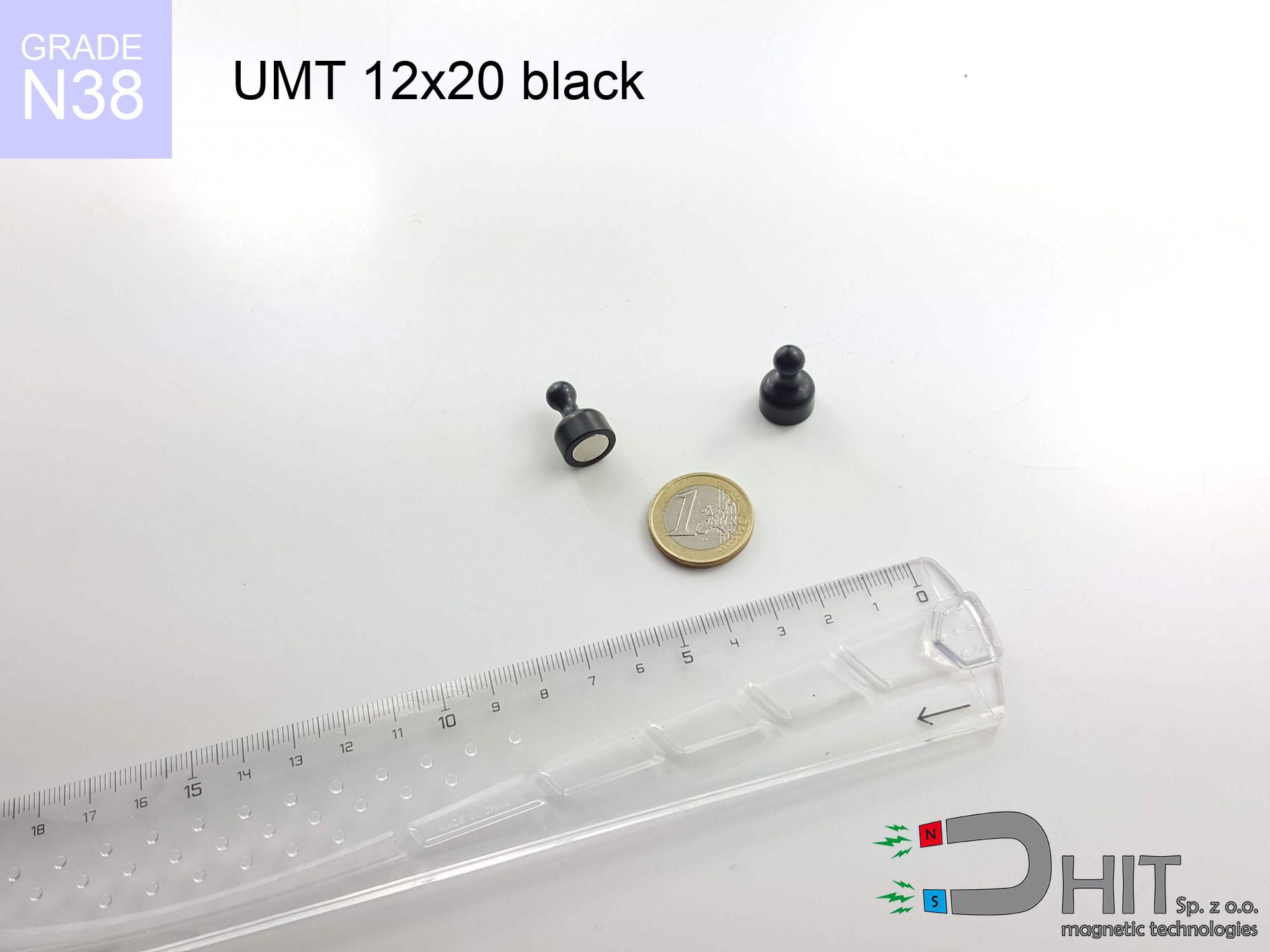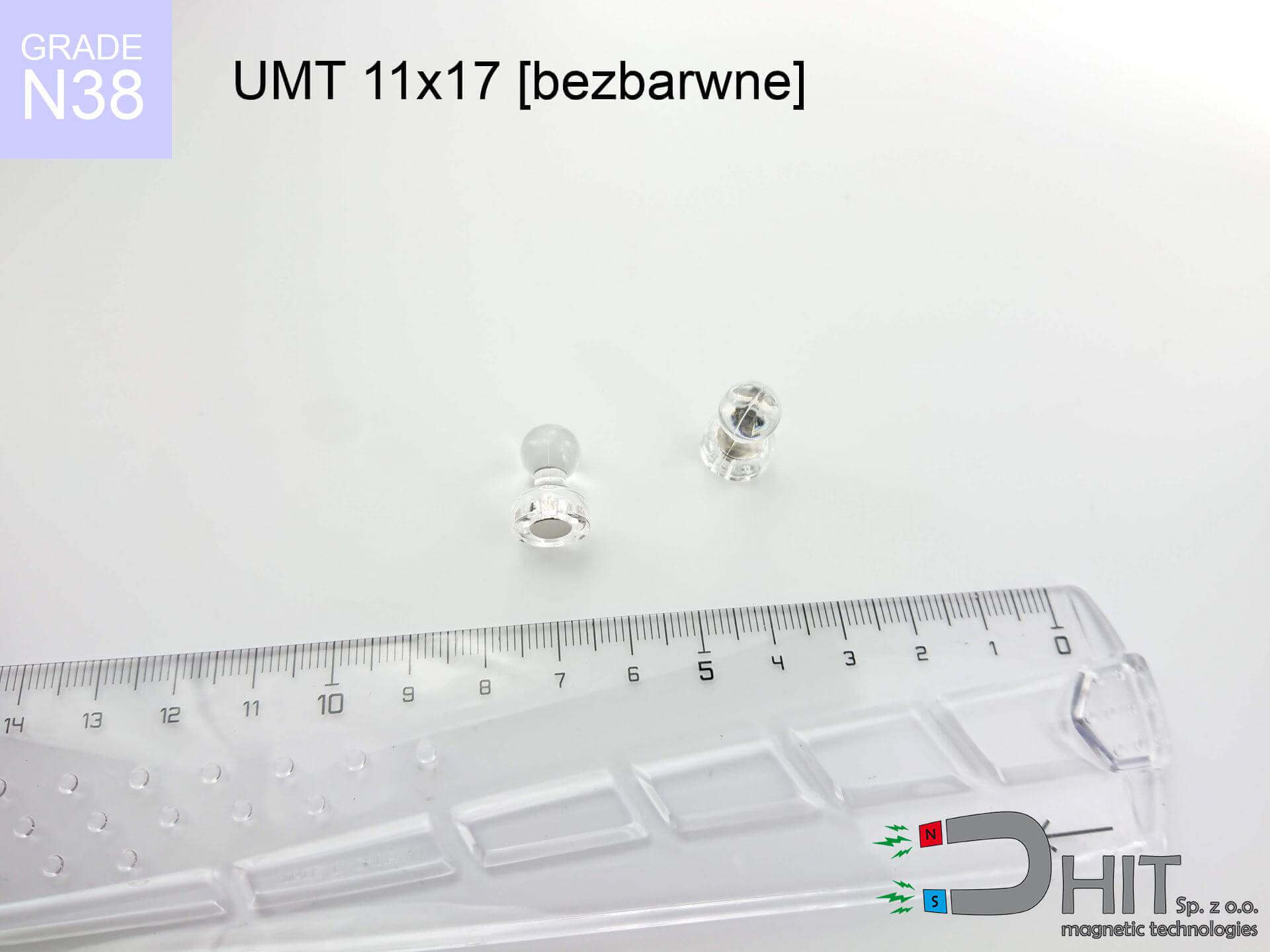SM 32x500 [2xM8] / N52 - magnetic separator
magnetic separator
Catalog no 130467
GTIN/EAN: 5906301813385
Diameter Ø
32 mm [±1 mm]
Height
500 mm [±1 mm]
Weight
2770 g
Magnetic Flux
~ 10 000 Gauss [±5%]
1562.10 ZŁ with VAT / pcs + price for transport
1270.00 ZŁ net + 23% VAT / pcs
bulk discounts:
Need more?
Pick up the phone and ask
+48 22 499 98 98
or let us know by means of
form
our website.
Lifting power as well as structure of magnetic components can be tested with our
online calculation tool.
Orders placed before 14:00 will be shipped the same business day.
Technical - SM 32x500 [2xM8] / N52 - magnetic separator
Specification / characteristics - SM 32x500 [2xM8] / N52 - magnetic separator
| properties | values |
|---|---|
| Cat. no. | 130467 |
| GTIN/EAN | 5906301813385 |
| Production/Distribution | Dhit sp. z o.o. |
| Country of origin | Poland / China / Germany |
| Customs code | 85059029 |
| Diameter Ø | 32 mm [±1 mm] |
| Height | 500 mm [±1 mm] |
| Weight | 2770 g |
| Material Type | Stainless steel AISI 304 / A2 |
| Magnetic Flux | ~ 10 000 Gauss [±5%] |
| Size/Mount Quantity | 2xM8 |
| Polarity | circumferential - 19 poles |
| Casing Tube Thickness | 1 mm |
| Manufacturing Tolerance | ±1 mm |
Magnetic properties of material N52
| properties | values | units |
|---|---|---|
| remenance Br [min. - max.] ? | 14.2-14.7 | kGs |
| remenance Br [min. - max.] ? | 1420-1470 | mT |
| coercivity bHc ? | 10.8-12.5 | kOe |
| coercivity bHc ? | 860-995 | kA/m |
| actual internal force iHc | ≥ 12 | kOe |
| actual internal force iHc | ≥ 955 | kA/m |
| energy density [min. - max.] ? | 48-53 | BH max MGOe |
| energy density [min. - max.] ? | 380-422 | BH max KJ/m |
| max. temperature ? | ≤ 80 | °C |
Physical properties of sintered neodymium magnets Nd2Fe14B at 20°C
| properties | values | units |
|---|---|---|
| Vickers hardness | ≥550 | Hv |
| Density | ≥7.4 | g/cm3 |
| Curie Temperature TC | 312 - 380 | °C |
| Curie Temperature TF | 593 - 716 | °F |
| Specific resistance | 150 | μΩ⋅cm |
| Bending strength | 250 | MPa |
| Compressive strength | 1000~1100 | MPa |
| Thermal expansion parallel (∥) to orientation (M) | (3-4) x 10-6 | °C-1 |
| Thermal expansion perpendicular (⊥) to orientation (M) | -(1-3) x 10-6 | °C-1 |
| Young's modulus | 1.7 x 104 | kg/mm² |
Table 1: Rod construction
SM 32x500 [2xM8] / N52
| Parameter | Value | Description / Unit |
|---|---|---|
| Diameter (Ø) | 32 | mm |
| Total length | 500 | mm (L) |
| Active length | 464 | mm |
| Section count | 20 | modules |
| Dead zone | 36 | mm (2x 18mm starter) |
| Weight (est.) | ~3056 | g |
| Active area | 466 | cm² (Area) |
| Housing material | AISI 304 | 1.4301 (Inox) |
| Surface finish | Ra < 0.8 µm | Polished |
| Temp. class | 80°C | Standard (N) |
| Force loss (at max °C) | -12.8% | Reversible loss (physics) |
| Force (calculated) | 41 | kg (theor.) |
| Induction (surface) | ~10 000 | Gauss (Max) |
Chart 2: Field profile (20 sections)
Chart 3: Temperature performance
Chemical composition
| iron (Fe) | 64% – 68% |
| neodymium (Nd) | 29% – 32% |
| boron (B) | 1.1% – 1.2% |
| dysprosium (Dy) | 0.5% – 2.0% |
| coating (Ni-Cu-Ni) | < 0.05% |
Sustainability
| recyclability (EoL) | 100% |
| recycled raw materials | ~10% (pre-cons) |
| carbon footprint | low / zredukowany |
| waste code (EWC) | 16 02 16 |
Other deals
Advantages as well as disadvantages of neodymium magnets.
Pros
- They have stable power, and over more than ten years their performance decreases symbolically – ~1% (according to theory),
- They are noted for resistance to demagnetization induced by external magnetic fields,
- The use of an shiny finish of noble metals (nickel, gold, silver) causes the element to look better,
- Magnets have exceptionally strong magnetic induction on the active area,
- Due to their durability and thermal resistance, neodymium magnets can operate (depending on the form) even at high temperatures reaching 230°C or more...
- In view of the possibility of flexible molding and customization to custom solutions, NdFeB magnets can be manufactured in a wide range of forms and dimensions, which expands the range of possible applications,
- Fundamental importance in electronics industry – they serve a role in data components, drive modules, advanced medical instruments, and complex engineering applications.
- Compactness – despite small sizes they generate large force, making them ideal for precision applications
Cons
- They are fragile upon too strong impacts. To avoid cracks, it is worth protecting magnets using a steel holder. Such protection not only shields the magnet but also improves its resistance to damage
- Neodymium magnets lose their force under the influence of heating. As soon as 80°C is exceeded, many of them start losing their power. Therefore, we recommend our special magnets marked [AH], which maintain stability even at temperatures up to 230°C
- They rust in a humid environment. For use outdoors we advise using waterproof magnets e.g. in rubber, plastic
- We recommend casing - magnetic holder, due to difficulties in realizing threads inside the magnet and complex forms.
- Possible danger resulting from small fragments of magnets are risky, if swallowed, which is particularly important in the context of child safety. Additionally, small elements of these devices are able to be problematic in diagnostics medical in case of swallowing.
- Due to neodymium price, their price is relatively high,
Holding force characteristics
Maximum magnetic pulling force – what it depends on?
- with the contact of a sheet made of low-carbon steel, ensuring maximum field concentration
- whose thickness equals approx. 10 mm
- with a surface free of scratches
- without the slightest clearance between the magnet and steel
- during detachment in a direction perpendicular to the mounting surface
- in stable room temperature
Key elements affecting lifting force
- Distance (between the magnet and the plate), since even a tiny distance (e.g. 0.5 mm) results in a reduction in lifting capacity by up to 50% (this also applies to paint, rust or debris).
- Force direction – declared lifting capacity refers to detachment vertically. When slipping, the magnet holds much less (typically approx. 20-30% of maximum force).
- Metal thickness – thin material does not allow full use of the magnet. Part of the magnetic field passes through the material instead of converting into lifting capacity.
- Metal type – different alloys reacts the same. Alloy additives weaken the attraction effect.
- Surface finish – full contact is obtained only on polished steel. Any scratches and bumps create air cushions, reducing force.
- Temperature influence – hot environment weakens magnetic field. Too high temperature can permanently damage the magnet.
Lifting capacity testing was performed on plates with a smooth surface of suitable thickness, under perpendicular forces, however under parallel forces the lifting capacity is smaller. Additionally, even a small distance between the magnet and the plate decreases the holding force.
Warnings
Pacemakers
Medical warning: Strong magnets can turn off heart devices and defibrillators. Stay away if you have electronic implants.
Threat to electronics
Powerful magnetic fields can erase data on payment cards, HDDs, and storage devices. Maintain a gap of min. 10 cm.
Do not drill into magnets
Dust generated during machining of magnets is flammable. Avoid drilling into magnets unless you are an expert.
Handling rules
Use magnets with awareness. Their huge power can surprise even professionals. Plan your moves and do not underestimate their power.
Threat to navigation
Remember: rare earth magnets produce a field that interferes with sensitive sensors. Maintain a separation from your phone, tablet, and GPS.
Protective goggles
Despite the nickel coating, the material is brittle and cannot withstand shocks. Do not hit, as the magnet may shatter into sharp, dangerous pieces.
Hand protection
Pinching hazard: The pulling power is so great that it can cause blood blisters, pinching, and even bone fractures. Protective gloves are recommended.
Allergic reactions
Studies show that the nickel plating (the usual finish) is a strong allergen. If your skin reacts to metals, prevent touching magnets with bare hands or choose encased magnets.
Choking Hazard
NdFeB magnets are not toys. Accidental ingestion of a few magnets can lead to them attracting across intestines, which poses a severe health hazard and requires urgent medical intervention.
Heat warning
Regular neodymium magnets (grade N) lose power when the temperature surpasses 80°C. The loss of strength is permanent.

![Magnetic bar SM 32x500 [2xM8] / N52 Magnetic bar SM 32x500 [2xM8] / N52](https://cdn3.dhit.pl/graphics/banners/magnet.webp)
![SM 32x500 [2xM8] / N52 - magnetic separator](https://cdn3.dhit.pl/graphics/products/sm-32x500-2xm8-rub.jpg)

![UMGZ 25x17x8 [M5] GZ / N38 - magnetic holder external thread UMGZ 25x17x8 [M5] GZ / N38 - magnetic holder external thread](https://cdn3.dhit.pl/graphics/products/um-25x17x8-m5-gz-keb.jpg)



